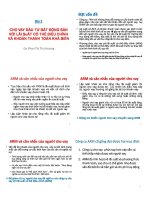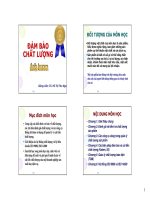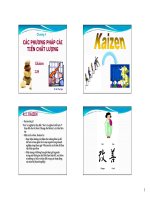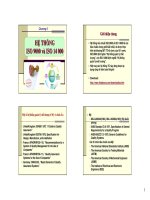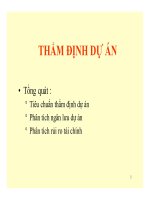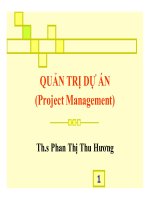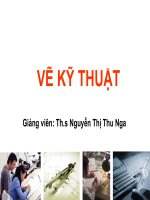Bài giảng môn Phương pháp giảng dạy tiếng Anh: Chapter 7 - Phan Thị Thu Nga
Bạn đang xem bản rút gọn của tài liệu. Xem và tải ngay bản đầy đủ của tài liệu tại đây (127.53 KB, 12 trang )
Chapter 7:
How to teach reading
Harmer, J.(1998). How to teach English. Longman
1. Why teach reading?
Language acquisition
Providing good models for writing
Providing opportunities to study language:
-vocabulary, grammar & pronunciation
-ways to construct sentences, paragraphs…
Introducing speaking interesting topics,
discussion, imaginative responses,
fascinating lessons
2. Kinds of reading text
Texts: authentic or not
Authentic written material
the most important thing: texts are
as much like real English as possible
Topics & types of reading texts
Depending on the level & interests
of learners
3. Reading skills required
Scanning: particular bits of/ specific
information
Skimming for the main idea
Reading for detailed comprehension
Reading for developing critical
thinking skills
Reading & making inferences
4.Principles
Reading: not a passive skill
Ss engaged with what to read
Ss encouraged to respond to the
content of a text, not the language
Prediction: major factor in reading
Matching the task to the topic
Exploiting reading texts to the full
5. Stages of a reading lesson
Pre-reading tasks
While-reading tasks
Post- reading tasks
Pre-reading tasks
Definition: Arousing Ss’ interest in the topic
& making them want to read (to check or
clarify information & have some ideas of what
they are going to read)
Techniques: True/False predictions, Openpredictions, Pre-questions, Ordering,
Matching & Network
While-reading tasks
Aims: checking Ss’ comprehension &
helping them to read the text
Techniques: 3 or 4-option multiple choice,
true/false statements, grids (completing the
table), ordering (pictures/statements),
matching, comprehension questions (wh or
Y/N), given answers, networks or
completing an outline
Post- reading tasks
Aims: encouraging Ss to reflect upon what
they’ve read & for information staying with
Ss, they need to go beyond simply reading
it & using it
Techniques: discussion, write-it up & roleplay
Discussion
Eliciting personal responses by asking Ss to:
match what they read against their own
experience
imagine themselves in a situation related
to the text but beyond their own experience
Express their feeling & opinion
Write - it- up
summarizing the main ideas of the text by
using their own words
drawing their own conclusion
Role-play
giving further language practice by using
what Ss have read in the text
applying what they’ve read in a new
situation
